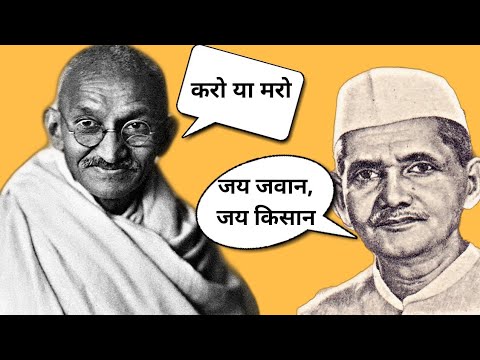
Mahatma Gandhi and Lal Bahadur Shastri: Pillars of Indian Independence
Mahatma Gandhi and Lal Bahadur Shastri are two monumental figures in Indian history whose lives and legacies continue to inspire generations. Both played crucial roles in India’s struggle for independence and in shaping the nation post-independence. Here’s a closer look at their contributions and ideals.
Mahatma Gandhi: The Architect of Non-Violence
Mahatma Gandhi, born on October 2, 1869, in Porbandar, Gujarat, is often hailed as the Father of the Nation in India. His philosophy of non-violence, or Ahimsa, and truth, or Satyagraha, became the cornerstone of India’s freedom movement. Gandhi believed in the power of peaceful protests and civil disobedience as tools for social and political change.
Key Contributions:
Civil Disobedience Movement: Gandhi spearheaded several mass movements against British colonial rule, including the Salt March in 1930, which symbolized resistance to unjust laws.
Social Reforms: Beyond political activism, Gandhi worked tirelessly to uplift marginalized communities, eradicate untouchability, and promote communal harmony.
Global Influence: His teachings have inspired countless civil rights movements worldwide, including those led by figures like Martin Luther King Jr. and Nelson Mandela.
Lal Bahadur Shastri: The Man of Action
Lal Bahadur Shastri, born on October 2, 1904, in Mughalsarai, Uttar Pradesh, was a prominent leader in India’s independence movement and later served as the country’s Prime Minister from 1964 to 1966. Shastri’s leadership was marked by his commitment to peace and development.
Key Contributions:
Leadership During War: Shastri became a national hero during the Indo-Pakistani War of 1965. His rallying cry, “Jai Jawan Jai Kisan†(Hail the soldier, Hail the farmer), emphasized the importance of both soldiers and farmers in nation-building.
Focus on Agriculture: He promoted the Green Revolution, which aimed at making India self-sufficient in food production. His policies laid the foundation for agricultural advancements in the country.
Promotion of Peace: Shastri’s leadership was defined by his efforts to foster peace with neighboring countries, reflecting his belief in diplomatic resolutions over conflict.
Shared Ideals and Legacy
Both Gandhi and Shastri shared common ideals that shaped their lives and contributions:
Commitment to Service: They dedicated their lives to serving the nation and uplifting the downtrodden.
Principles of Peace: Gandhi’s philosophy of non-violence resonated with Shastri’s approach to conflict resolution, promoting diplomacy and dialogue.
National Integrity: Both leaders emphasized the importance of unity and integrity in a diverse nation like India, striving to bridge communal divides.
Gandhi Jayanti, Non-Violence, Sustainability, Simple Living, Eco-Friendly, Mahatma Gandhi, Gandhi Birthday, Peaceful Living, Environmental Sustainability, Minimalism, Compassionate Lifestyle, Eco-Conscious Living, Sustainable Living Tips, Gandhi Principles, October 2nd Celebrations, Importance of Gandhi Jayanti, How to live a sustainable lifestyle, Simple ways to reduce carbon footprint, Gandhi's teachings on non-violence, Eco-friendly practices for daily life, Celebrating Gandhi Jayanti with sustainability, Mahatma Gandhi's philosophy on simple living, Embracing minimalism for a better life
Comments